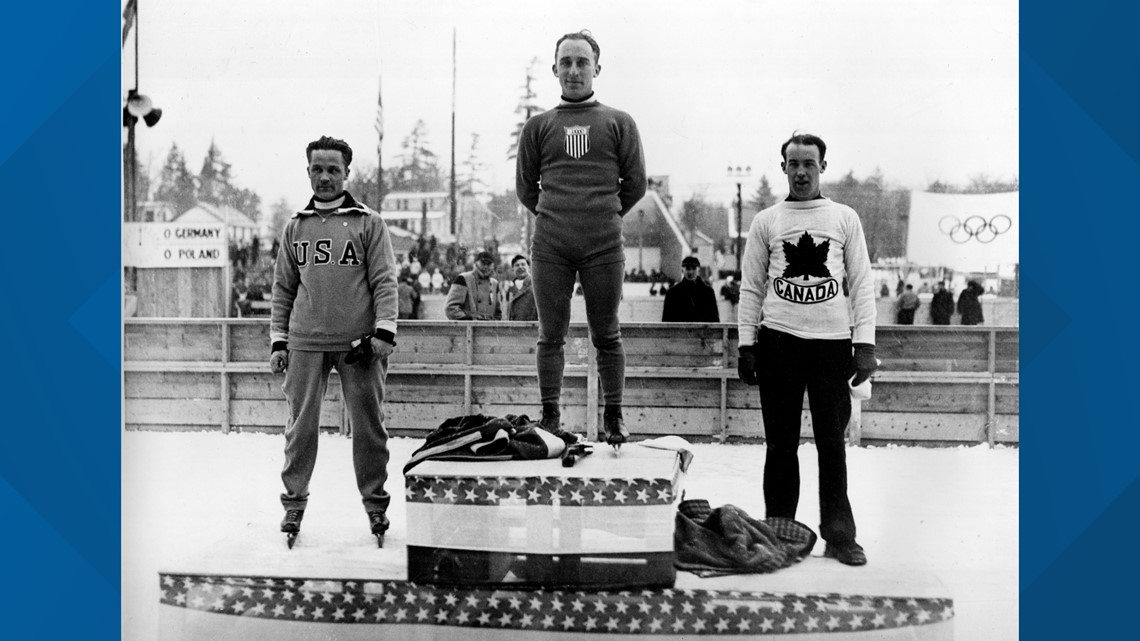BEIJING, China — The Winter Olympics have had its fair share of memorable scandals over the years.
From Russia's state-run doping controversy to Tonya Harding's alleged knee-shattering efforts to weaken her competition, the winter games have regularly generated some shocking headlines.
But there are some scandals, outcries, and protests that have become lesser-known over time.
Here are five Winter Olympic-related controversies that are worth revisiting:
1. Jewish community protests Lake Placid Winter Games in 1932
It's well known how outspoken the Jewish community protested the infamous 1936 "Nazi Games" in Berlin. But a similar scandal involving anti-Semitism occurred four years earlier in Lake Placid, New York.
The Jewish Tribune objected to Lake Placid hosting the games due to its position near the Adirondacks, a region that reportedly had facilities with a long history of enforcing anti-Semitic practices.
According to Peter Hopsicker's article published in the Journal of Sport History, the Jewish leaders urged locals to protest the use of tax funds on improving Olympic facilities in a place with a history of discriminatory policies.
"The outcome of the protest at least indicated that the citizens of New York were unwilling to fund organizations that promoted such radical antagonisms," Hopsicker wrote.


2. Lake Placid turns Olympic complex into a prison
Nearly 50 years after offending the Jewish community, Lake Placid again caused turmoil during the 1980 Winter Games with how it chose to utilize its Olympic complexes.
Before the games even started, officials announced that the facility housing athletes would later be turned into a federal prison for inmates. The plan intended to get some use out of the Olympic facilities so they wouldn't fall into disrepair or go unused.
Activists opposed to the idea assembled a group called "Stop the Olympic Prison," which began circulating flyers and threatened to interfere with the construction of the housing complex.
Other nations didn't like the image of their talented athletes being "locked up" in a room designed to be a prison cell. The Swedish Olympic Committee bluntly called the housing facilities "rotten," according to Sports Illustrated.
The objections didn't have much effect since the facility is currently run by the Federal Bureau of Prisons, which houses 700 inmates at the former Olympic complex.


3. Australian ski racer killed before 1964 Winter Games
Ross Milne, a 19-year-old ski racer, was tragically killed during a training run in Austria after the skier struck a tree at 60 mph. Three days earlier, a British luge racer also died during a training run.
The fatalities prompted anger from Milne's manager who felt his death could have been avoided if the downhill course had been better managed. Olympic officials responded by implementing extra safety measures along the course, according to the Sydney Morning Herald.
Milne's younger brother Malcolm went on to have a successful career in ski racing.
4. 'Mysterious figure' costs ski racer victory at 1968 Winter Games
Austrian ski racer Karl Schranz came close to beating rival Jean-Claude Killy at the 1968 games in France.
Killy was on a winning streak and Schranz hoped to make a comeback during his runs at the slalom. During his second run, Schranz claimed a figure in black crossed his path and obstructed his vision. He stopped and asked for a re-run.
Schranz made a successful run and was declared the winner. But his victory was short-lived after officials disqualified Schranz and awarded the honor to Killy.
According to Sports Illustrated, officials decided Schranz missed two gates on the course before he allegedly crossed paths with the mysterious figure, thus disqualifying his run.
5. East Germany's lugers disqualified at 1968 Winter Games
The female lugers from East Germany were the favorite to win at the 1968 games in France. But their dreams of victory were quickly dashed after they were accused of breaking Olympic rules.
According to UPI, competitors noticed the East German lugers warming the blades of their runners, an illegal practice because heat can make runners move faster down the icy course.
The lugers were disqualified and East German officials allegedly reacted by shouting foul language.
According to articles published in German media, there was a heated dispute over whether the cheating had been staged by Western athletes.

